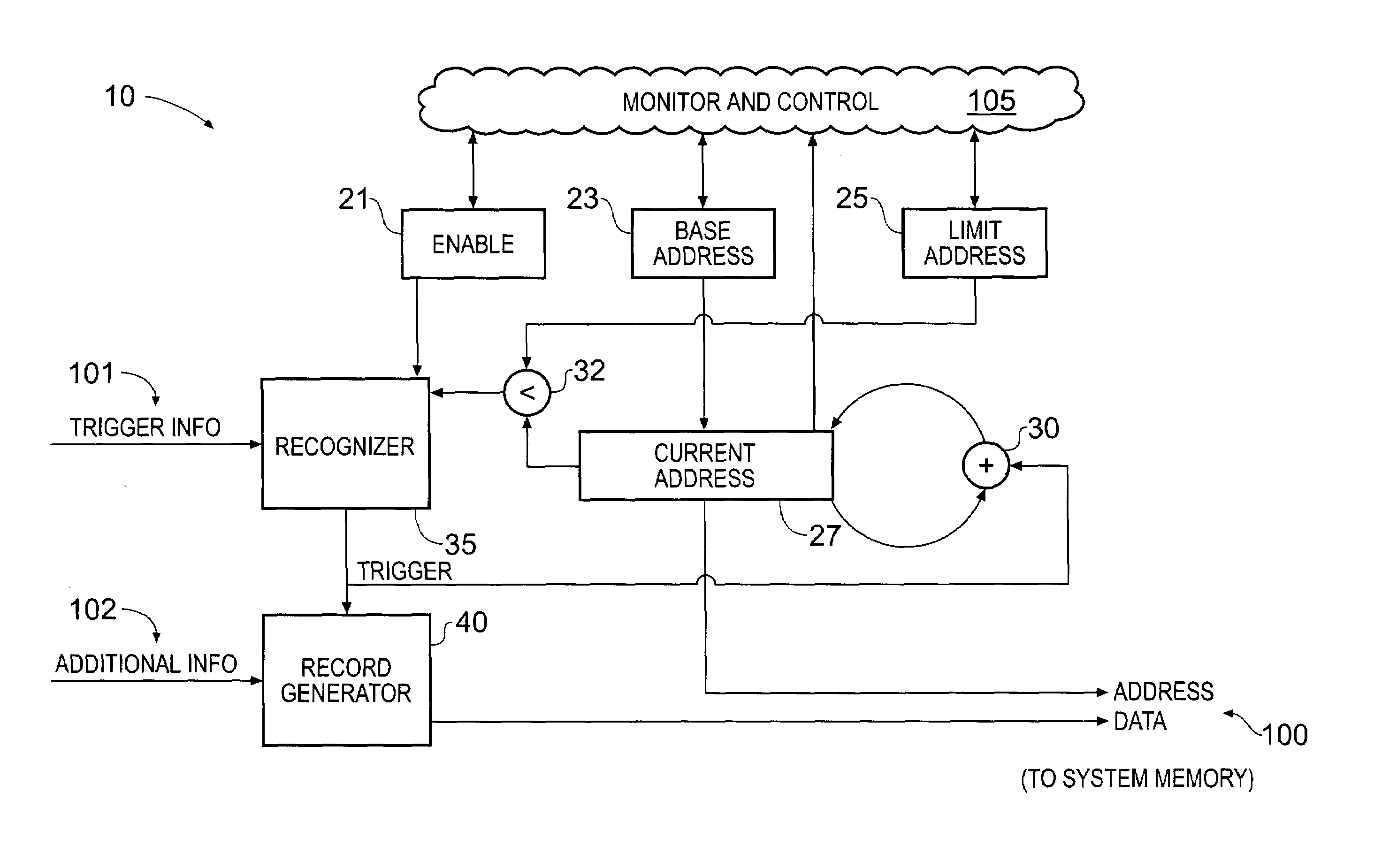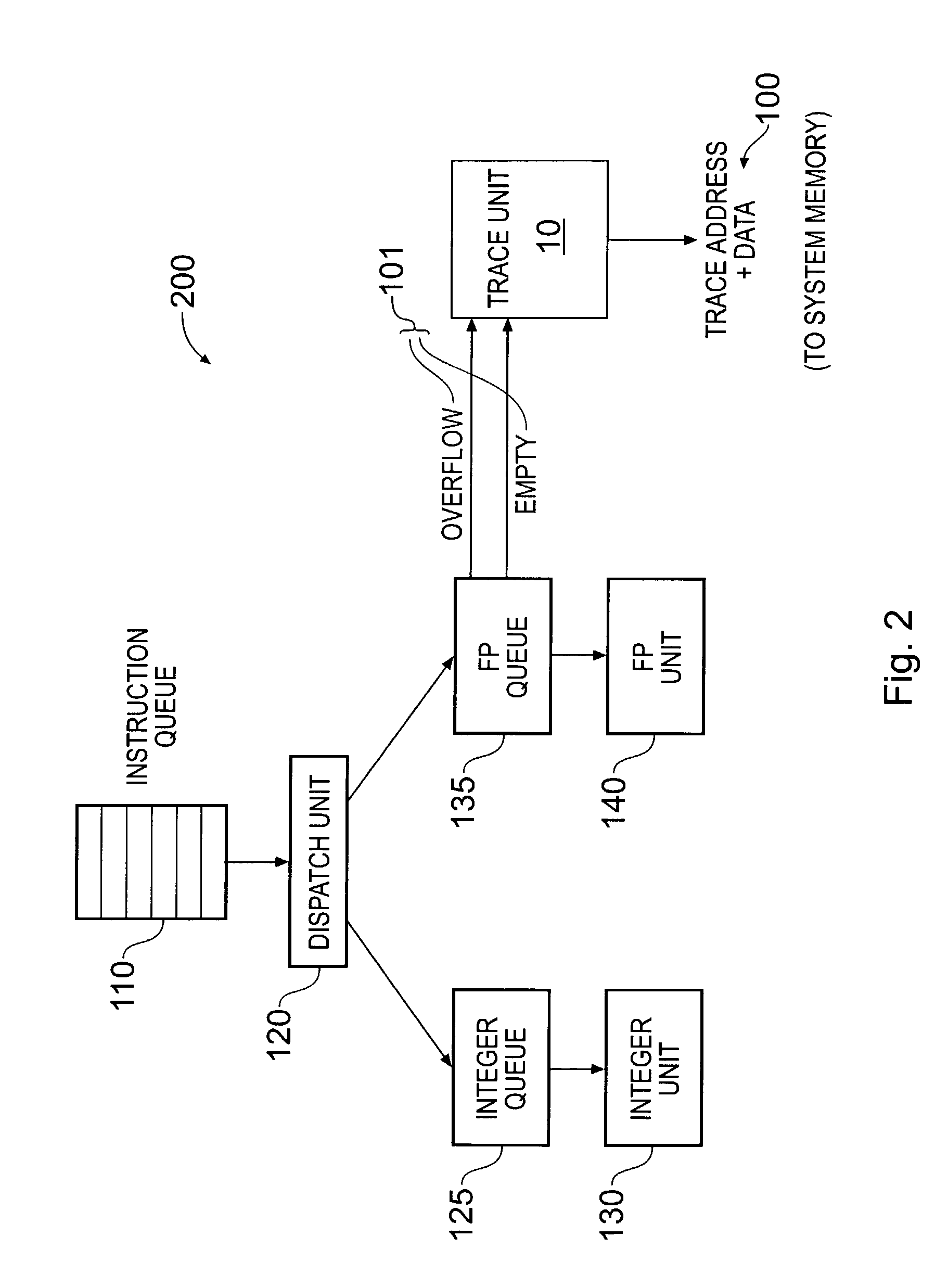System and method for generating trace data in a computing system
- Summary
- Abstract
- Description
- Claims
- Application Information
AI Technical Summary
Benefits of technology
Problems solved by technology
Method used
Image
Examples
Embodiment Construction
[0042]FIG. 1 illustrates a trace unit 10 in accordance with one particular embodiment of the present invention. The trace unit serves to intercept desired diagnostic information and to write this information out to main memory, as will now be described.
[0043]As shown in FIG. 1, trace unit 10 includes two address storage registers. The first of these registers 23 is used for storing a base address. The second register 25 is used for storing a limit or end address. Together, these two registers 23, 25 define a region of system memory into which the trace unit will output diagnostic information. (It will be appreciated that this memory region could also be defined by storing its base address and size, rather than the base address and end address).
[0044]In operation, the desired values for the base address and limit address are written into register 23 and register 25 respectively by the monitor and control system 105. The base and limit addresses stored in registers 23 and 25 may also ...
PUM
 Login to View More
Login to View More Abstract
Description
Claims
Application Information
 Login to View More
Login to View More - R&D
- Intellectual Property
- Life Sciences
- Materials
- Tech Scout
- Unparalleled Data Quality
- Higher Quality Content
- 60% Fewer Hallucinations
Browse by: Latest US Patents, China's latest patents, Technical Efficacy Thesaurus, Application Domain, Technology Topic, Popular Technical Reports.
© 2025 PatSnap. All rights reserved.Legal|Privacy policy|Modern Slavery Act Transparency Statement|Sitemap|About US| Contact US: help@patsnap.com



